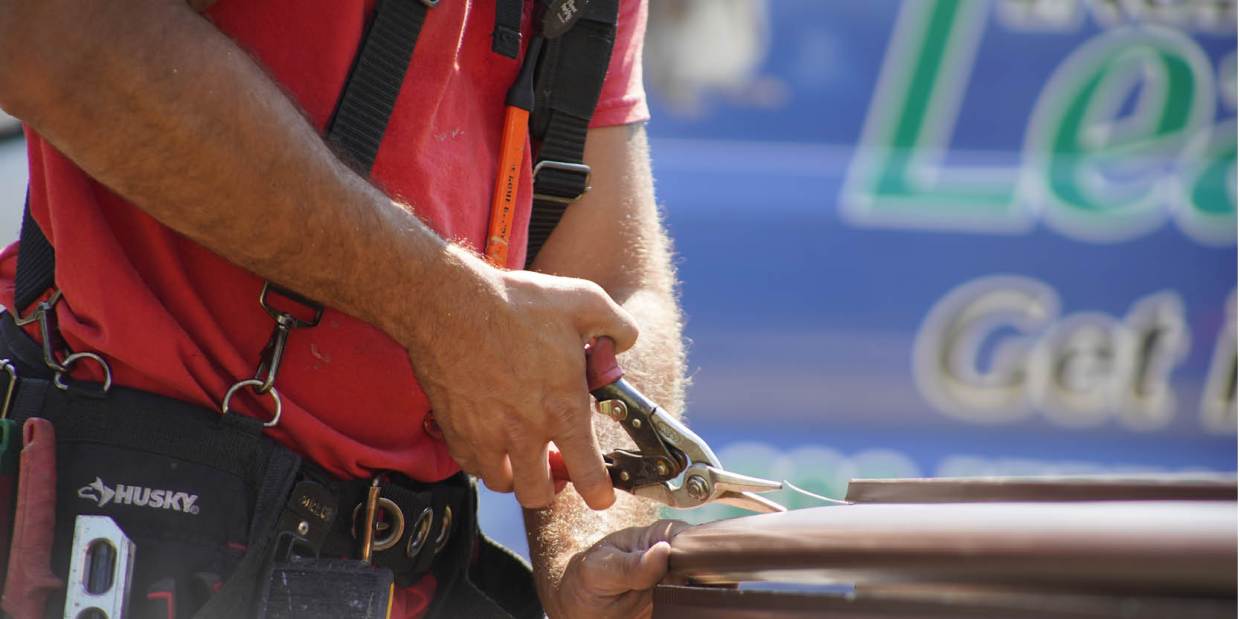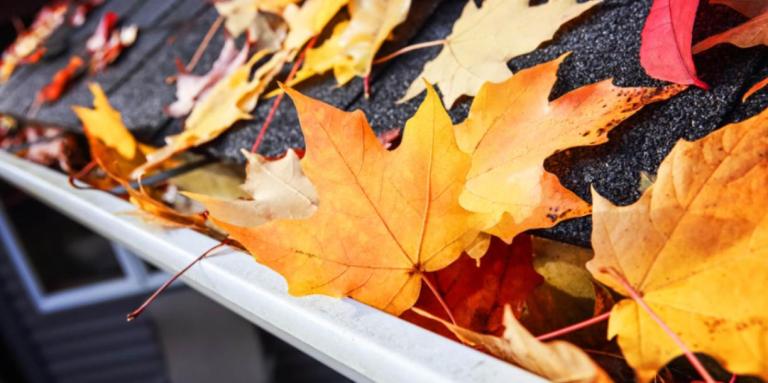Aluminum gutters are probably the most cost-effective gutter to put on your home. You can have a professional install your gutters. You can even do it yourself. However, do you realize what you need to do to install them?
A Better Choice
The Leafguard one-piece gutter system is the premier system available. Our professionals will evaluate your home and provide you with an estimate. And often, they can be at your home the next day to install them. This saves you a lot of time and effort. Its durability, longevity, and functionality make it a great return on your investment.
Options for Installing Aluminum Gutters
Do It Yourself
To install an aluminum gutter yourself, you must have some skill and stamina. While cutting and connecting the parts isn’t too tricky, climbing up and down ladders all day can be exhausting. The average one-story home will take about 6 to 8 hours to install the new gutter*.
You’ll probably need to purchase the gutter run in sections since most home stores only carry a maximum of 16-foot runs of the gutter. Measure along your house’s fascia to determine the length of the gutter you need to purchase. You must also purchase end caps, corners, downspout outlet fittings, elbows, hangers, downspouts, wall brackets, sheet-metal screws, rivets, and silicone sealant. You will also need tools, including tin snips, a hack saw, a hole saw, a rivet gun, a level, a screwdriver (preferably a battery-operated screw gun), and a ladder.
Attaching the Cap
Attach the end cap to the gutter with a bead of silicone sealant. Tap the end cap onto the gutter, forming a tight seal.
Cutting the Gutter to Length
Cut the gutter to length using tin snips and a hacksaw. If the gutter is not long enough, you will need to put two pieces of gutter together. Make sure you overlap the two pieces by approximately 4 inches and put the factory-cut edge to the outside to get a smooth appearance. Use silicone sealant where the two pieces overlap to make a water-tight seal and let it dry. Use sheet metal screws or rivets to secure the sections at the sides.
Corners
When the gutter needs to turn a corner, you will need to use a pre-mitered corner piece. Attach the corner the same way you would the end cap, except you will need to screw or rivet the pieces on the sides. Depending on how your home is built, you can use either an end cap or continue with another run of gutter.
Downspout Outlet
A 3-inch diameter hole will need to be cut in the bottom of the gutter at the end of the run where you intend to place your downspout. Use a hole saw to make this cut. Attach an outlet fitting into the hole using silicone sealant and rivets.
Gutter Slope
Use the level to position the gutter against the fascia of the house. The gutter needs to be hung at a slight angle heading downward. The common practice is ¼ inch drop per every 10 feet of run toward the downspout. This is called the pitch. Start with the high end and place a gutter mounting bracket into the gutter, then drive a screw through the gutter, into the fascia, and a roof rafter tail. Continue this process, making sure you correctly pitch the gutter so water will flow correctly.
Downspout Run
Place two elbows onto the top of the upper end of the downspout and secure them with sheet metal screws. Slip the elbow on the upper end of the downspout over the outlet fitting protruding from the gutter above. Attach the downspout to the house with the wall brackets using sheet metal screws to fasten the brackets. You would also want to place another elbow piece at the bottom of the downspout or use a splash block to drive the water away from your foundation.
Professional Installation
Keep in mind that gutters that have seams are prone to leakage. The best type of gutters are seamless gutters, which must be manufactured and installed by a professional. Without seams, you won’t have leaks in the gutter run unless the gutters somehow become damaged.
If you have more than a single story on your home, you may want to call a professional with better tools and more experience with hanging gutters. This way, you can avoid injury and the expense of purchasing tools you may not already have.
A professional installation will give you a better result and less aggravation in the long run.
Maintenance
Whether you install the gutters yourself or have a professional install them, you need to maintain your gutters at least twice yearly. So you’ll have to continue to climb up and down ladders to clean debris, dirt, leaves, and possibly animals or insects.
You could purchase a filter to go on top of your gutters to keep debris out. However, the ones you can get in your local home store are often inferior quality. And many of the professionally installed filters also collect debris. You’ll end up having to clean those as well.
Or you could pay a service to come out and clean your gutters, costing you several hundred dollars a year.
Why Choose Leafguard?
Our employees, not contractors, professionally install Leafguard. You can count on them to explain what your home needs, give you an estimate, and answer all of your questions. The gutters can usually be installed the day after you receive your quote. Our installers put up your gutters in one day and clean your yard to your satisfaction.
Leafguard gutters protect due to liquid adhesion. Liquid adhesion is a simple but powerful principle: water adheres to a surface and is pulled downward by the force of gravity. That “pull” corrals the water gently into the seamless gutter system rather than allowing it to escape over the edge. Leafguard gutters are made from aluminum, 20% thicker than the industry standard, and downspouts 30% larger than our competitors.
The one-piece system sheds leaves and debris and keeps pests out, so you won’t have to clean them. Leafguard gutters are guaranteed never to clog as long as you own your home, or we will clean or repair them for free. And never having to clean or repair your gutters means never getting on a ladder again! Leafguard: protection from a company you can trust.


